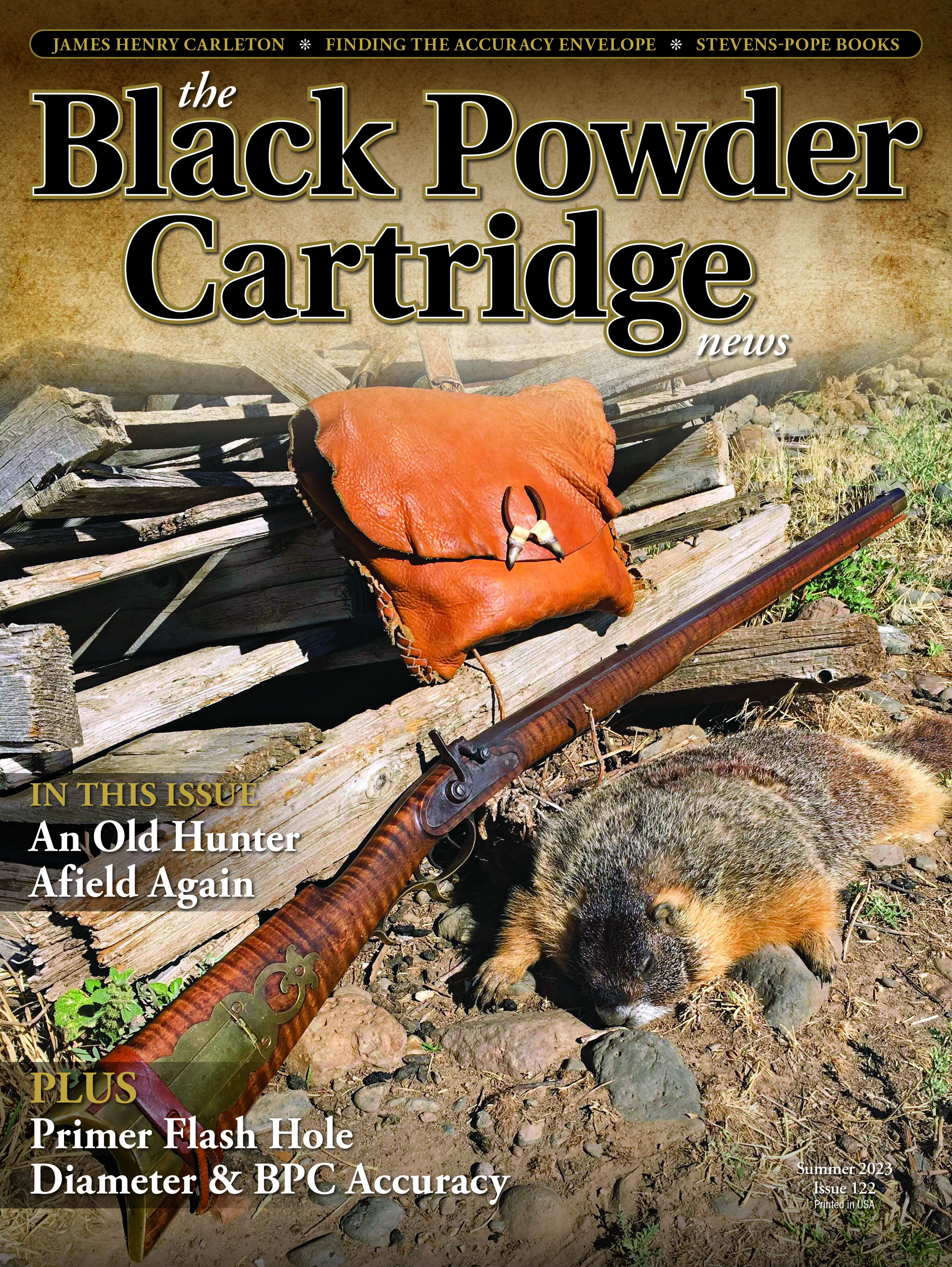Letters from Readers
Primers For Black Powder
column By: Staff | June, 23
Dear Editor,
I saw the letter by Lars Heinzinger and the response by Steve Garbe on primers in The Black Powder Cartridge News, No. 121 (Spring 2023). I would like to direct your attention to the Speer Reloading Manual #14, Sixth Printing, (April 2013). I will risk oversimplifying 10 pages of written material, five tables, two sets of drawings of conformal transducer readouts and two pages of loading data; but in their tests, primers do not make that much difference. Powder make and type can matter more, in the 45-70.
The Speer manual used several different brands and granulations of black powder and a number of different primers. They also wrote about an experimental primer that Speer considered for using with black powder only and the difference in flash hole area between boxer and Berdan primers. I found it most interesting.
– Wink
Dear Wink,
Thanks for the heads-up about the Speer manual. I have not read that issue, but I will. However, I have to fall back on my own testing and experience in shooting matches concerning my opinion on primers. I firmly believe that primers can make a difference in lowering standard deviation and extreme spread, especially in smaller black-powder cartridges. I’ve have spoken before of “load inertia,” which I have explained as the combination of bullet weight, bullet temper, neck tension, crimp, powder compression and total powder charge weight and how it resists the power of the primer to move forward. Too little load inertia can result in the bullet moving into the barrel from the chamber before the powder has a chance to really ignite. An air space is then created, which can seriously affect velocity and this air space is not uniform. In extreme cases, I have had case separations because the powder charge moves forward before the case grabs the wall of the chamber from the pressure of the powder igniting. The 32-40 is somewhat notorious for this, especially when breech-seating the bullet. Simply compressing the powder charge slightly (increasing load inertia) will many times stop the case separations. I’m speaking from personal experience here.
The 45-70 is a very forgiving cartridge when it comes to primer selection. I’ve used primers from Large Rifle Magnum down to Small Pistol (in specially ordered cases) with good results. However, the 45-70 is typically used with relatively heavy bullets, many times with a compressed charge and as such, has sufficient load inertia to offset the blow of the primer. I would recommend reading Spence Wolf’s book on reloading the 45-70 and his experiments with primers, neck tension, crimp and primer flash hole size. Spence ran some very interesting experiments that relate directly to the topic of black-powder primers and some of his results dovetail with my own experience.
Thanks for the input and keep us posted!
– Steve Garbe
Old Black Powder
Dear Editor,
Many thanks to Mike Nesbitt for an insightful investigation. I have often wondered at anecdotal or circumstantial evidence that the old black powder was slightly more energetic than today’s variety. Mike’s experimental result seems counter to that, but it could be from any number of factors. How was the fouling from that old charge? Any significant difference noticed?
Also, might the weight loss of about a grain come from moisture loss since the earlier weighing? If so, I wonder if a trace of absorbed humidity provides a hint of steam pressure/steam cooling/steam cleaning? Or, if it excites the flame-front like in a water-injected piston engine? I have no answers, just questions.
I wish we knew somebody with a laser chromatograph or something to zap granules of new and old powders to see if the chemistry differs.
The anecdotal evidence I mention comes from some of the old load data documented, but more importantly, from Wyman White’s book about his service in the 2nd United States Sharpshooters. Seems a “Johnny Reb” told him (approximately), “ We figured it was you Sharp boys over there, the bullets got here before the sound of your shot…”
That was at around 300 yards, and the Sharps paper cartridge was not heavily charged for its bullet weight, yet the slug was still well above the speed of sound, even at 300 yards or so for the lag to be noticeable at that range. The muzzle report would arrive in around ¾ of a second, and that weight bullet would shed some fair velocity in 300 yards, having to start pretty well above sonic to beat that ¾ second. Maybe the nitrated paper contributed to the velocity a bit, and/or maybe the old powders had a tad more “oomph” per grain, or both.
Well, anyhow, thanks to Mike for an interesting and relevant experiment, and best regards to the crew at The Black Powder Cartridge News.
Many thanks again,
– Stephen DeHart, Texas


